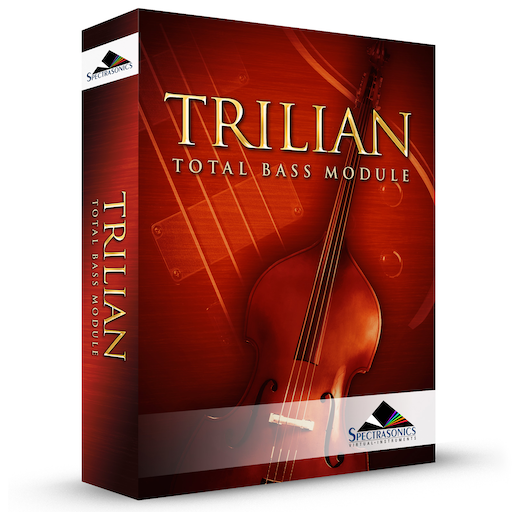This QuickStart provides an overview of the essential things you’ll need to know to get started using Trilian.
- Trilian can be run as a standalone application or hosted in any DAW.
- Trilian can be a memory-intensive instrument, especially with Multis loaded. A system with plenty of RAM will greatly enhance performance. Be sure and check out the Concepts: Performance Optimization chapter.
1. Install Trilian
- Installing can take up to an hour and will require 80 GB of free hard drive space.
2. Authorize the Plug-in
- Authorization can be done immediately from any computer connected to the Internet.
3. Get Everything Updated
- Make sure you have the latest versions of the Software, Soundsources, and Patches.
- Open Trilian and Select the “Check for Updates” button on the splash screen (or select the Spectrasonics logo from any page in the plug-in).
- Select the button labeled “Check for Updates” to open the System Status page.
- Status indicators in red mean that an update is necessary. Click the “Get Updates” button to download them.
- After installing the updates, Trilian is ready to go!
NOTE: Be sure to quit your host software before installing the downloaded updates.
4. Use Trilian Multi-timbrally
- Trilian is a multi-timbral bass instrument, so you can use a single instance to load and play eight different bass sounds on different MIDI channels.
- Setup your host software for multi-timbral operation.
5. Loading Sounds
There are three types of sound libraries in Trilian: Patches, Multis, and Soundsources.
- To Load a Patch
- Select a Part Number Button in the Header.
- Click on the Patch Name Display just below the large Trilian title.
- The Patch Browser will open, allowing you to select and load Patches.
- To load a Multi
- Click the Multi Name Display in the Trilian Header.
- The Multi Browser will open, allowing you to select and load Multis.
- To Load a raw Soundsource
- Select “Clear Part” from the Utility Menu in the Header.
- On the Edit Page, click the Soundsource Name Display below Layer A.
- The Soundsource Browser will open, allowing you to select and load Soundsources.
NOTE: Trilian Soundsources can be extremely large. You can select the Zoom icon in the Soundsource Display to access Thinning options to reduce the number of samples that will load.
6. Watch essential Video Tutorials
We encourage you to view and download the following Omnisphere tutorial and Trilian product demonstration videos:
These videos will provide the minimum information every user needs to start working with Trilian.
7. Explore and Learn
For more in-depth information, watch additional tutorials and explore this Reference Guide, which is the primary manual for Trilian. This guide can be viewed on any computer and can be printed and searched to easily find and access the information you need.
- If you’re new to synthesis, we recommend starting with the chapters on Concepts, The Mixer, Browsers, Main Page, Arpeggiator, and Live Mode.
- If you have some experience with synthesis, be sure to check out the chapters on The FX Page, Automation & MIDI Learn, The Edit Page, and Stack Mode.
- Experienced synthesists can go in-depth with zooming concepts that are covered in the chapters on Modulation, Filters, LFOs, and Envelopes.
8. Support Resources
Online resources are available that can answer most technical questions. Please log in and visit our Knowledge Base
9. Have Fun!
Enjoy using Trilian and we hope you make some great music with it!
- The Spectrasonics Team
Need more help with this?
Spectrasonics Customer Support




